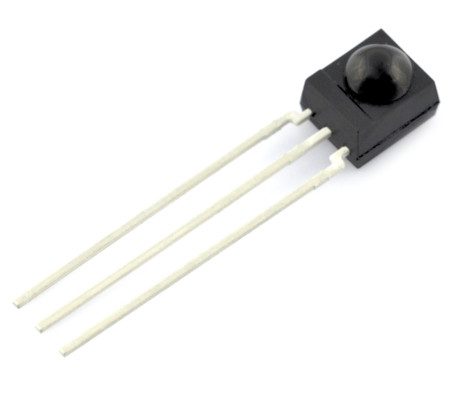Table of Contents:
The world of electronics is constantly evolving, introducing innovations that make life easier and open up new possibilities.
One such breakthrough was infrared technology and the related IR receiver, which revolutionized the way electronic devices interact.
The history of IR technology dates back to the 19th century, when scientists first began to explore the range of light invisible to the human eye.
Since then, infrared receivers have become an integral part of many devices, from simple remote controls to sophisticated security systems.
Check out what you should know about these components.
What is an IR receiver?
IR receiver is an electronic device designed to receive infrared light signals.
It works by detecting IR light that is emitted by transmitters, such as remote controls.
The main component of an IR receiveris a photodiode or phototransistor, which converts the received infrared light into an electrical signal.
This signal is then processed by the receiver’s electronics, allowing it to execute specific commands, such as changing the channel on a TV or adjusting the volume on an audio system.
IR receivers are widely used in many electronic devices because of their simplicity, low cost and effectiveness in transmitting data over short distances.
How is the IR receiver built?
Standard IR receiver consists of several key components that work together to efficiently receive and process infrared signals.
At the heart of the receiver is a photodiode or phototransistor, which is sensitive to IR light and converts it into an electrical signal.
This signal is then amplified by an amplifier circuit so that it can be efficiently processed.
Many IR receivers also include a built-in filter that helps distinguish the desired IR signals from background light interference, such as sunlight or fluorescent light.
The final stage is a demodulator, converting the modulated IR signal into a digital signal that can be recognized and processed by the device’s electronics.
The whole is enclosed in a compact housing.
This integrated design allows the IR receiver to accurately receive and interpret signals from IR transmitters, enabling seamless communication between devices.
What is worth knowing about infrared radiation?
Infrared radiation, often referred to as “invisible light,” plays a significant role in many aspects of our daily lives, especially in wireless communications.
Although invisible to the human eye, it is present all around us, emitted by a variety of sources such as the sun, artificial lighting and all objects that generate heat.
This ubiquity makes infrared radiation an excellent candidate for applications in wireless technologies, where it can be used to transmit data over short distances, as is the case, among other things.
in remote controls for home appliances or communication systems between various electronic devices, among others.
Solving the problem of interference in an environment where numerous sources of infrared radiation are present is a key challenge for seamless communication between devices equipped with IR receivers.
To this end, the signals sent from the remote control are modulated at a specific frequency, most often 38 kHz, although other values, such as 36 kHz, can also be encountered.
Through modulation, the signal acquires a unique time course, allowing it to be accurately distinguished from the background of other infrared sources and recognized by the IR receiver without error.
The modulation process ensures that information, such as a command to change the channel on a TV, for example, is transmitted clearly and without interference, which is crucial for efficient, reliable infrared wireless communication.
Where are IR receivers used?
Infrared receivers, with their ability to pick up signals with precision, have proven themselves in a wide range of devices.
It is worth mentioning some key areas where the IR receiver is commonly used:
- Remote control devices – this is still one of the most popular uses of IR receivers.
They are used in remote controls for TVs, DVD players, audio systems and other home appliances, allowing wireless communication between the remote control and the equipment. - Data transfer – IR receivers were used in some older mobile devices – phones and laptops – for wireless data communication over short distances, for example, to exchange files or contacts.
- Consumer electronics – IR receivers are often installed in audio equipment, game consoles and other electronic devices, allowing remote control of various equipment functions.
- Home automation – in smart home systems, IR receivers can be used to control lighting, HVAC systems, window blinds and other equipment using a central remote control or mobile app.
- DIY projects – IR receivers are widely used in the world of hobby electronics and DIY projects, becoming an indispensable tool for DIY enthusiasts.
Electronics enthusiasts use the IR receiver to create custom remote control devices, interactive gadgets, as well as to experiment with home automation and robotics.
What to look for when buying an IR receiver?
When selecting IR receiver, it is important to check several key factors that can affect its performance and compatibility with other devices.
First of all, it is important to pay attention to the operating frequency of this component, which must match the signal frequency of the transmitting device to ensure proper communication.
In addition, it is important to check the operating range of the receiver, which should correspond to the required transmission distances of the project.
How useful was this post?
Click on a star to rate it!
Average rating 5 / 5. Vote count: 2
No votes so far! Be the first to rate this post.




















